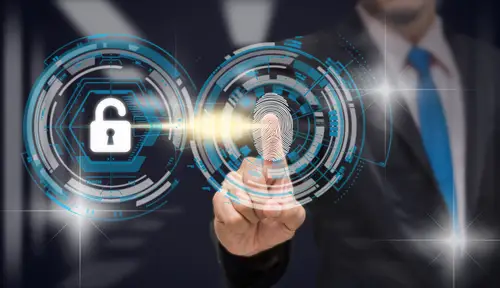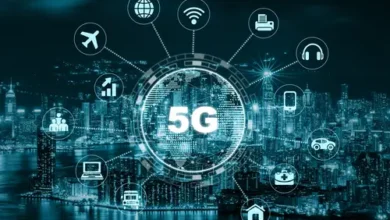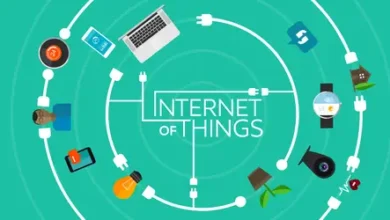Biometric Authentication Definition: Securing Data With Fingerprint

In our rapidly evolving digital world, securing personal and professional data has become more vital than ever. That’s where biometric authentication, particularly fingerprint and facial recognition technologies comes into play. Welcome to our deep-dive exploration of ‘Biometric Authentication Definition: Securing Data with Fingerprint and Facial Recognition’. This post sheds light on how these seemingly sci-fi concepts are transforming the landscape of data security in real-time scenarios. Imagine unlocking your devices or accessing restricted information merely by a touch or a glance! Intriguing, isn’t it? But this is no magic; it’s cutting-edge technology safeguarding your valuable data from prying eyes. So whether you’re tech-savvy seeking advanced knowledge or just curious about how biometrics keep your details secure – jump right in! Let us decode the intricate workings of these high-tech systems destined to redefine future paradigms of privacy protection.
“Understanding Biometric Authentication”
Biometric authentication is a cutting-edge technology that verifies a person’s identity based on their unique biological traits. This method offers a higher level of security compared to traditional password-based authentication systems. With fingerprint and facial recognition being the most widely used forms of biometric authentication, these systems analyze specific features such as fingerprint patterns or facial measurements to match an individual to their stored biometric data. By utilizing biometric authentication, organizations can enhance data security and prevent unauthorized access to sensitive information. However, challenges such as privacy concerns and potential risks of biometric data breaches must also be carefully addressed in order to fully leverage the benefits of this advanced security technology.
“Exploring Fingerprint Recognition Technology in Data Security”
Fingerprint recognition technology plays a crucial role in enhancing data security through biometric authentication systems. By capturing and analyzing unique patterns on an individual’s fingertips, this technology ensures a highly secure identification process. The intricate details of a person’s fingerprints serve as a robust form of authentication. This significantly reduces the chances of unauthorized access to sensitive data. Furthermore, fingerprint recognition offers a convenient and efficient method for users to access their devices or applications securely. With advancements in biometric technology, such as improved accuracy and speed of fingerprint scanning, organizations can bolster their data security measures and protect against cyber threats effectively. Embracing fingerprint recognition technology is paving the way for a more secure and streamlined approach to safeguarding digital information.
“Role of Facial Recognition in Safeguarding Digital Information”
Facial recognition technology plays a crucial role in safeguarding digital information by providing a secure and convenient method of authentication. By analyzing unique facial features such as the distance between eyes, nose shape, and facial contours, this technology can accurately verify the identity of individuals accessing sensitive data. Facial recognition adds an extra layer of security to digital systems. It ensures that only authorized users can gain access, reducing the risk of unauthorized breaches. Additionally, the non-intrusive nature of facial recognition makes it a user-friendly option for authentication, enhancing the overall user experience. As cyber threats continue to evolve, incorporating facial recognition technology into data security protocols can help organizations protect their valuable information effectively.
“Benefits and Challenges of Using Biometrics for Data Protection”
Biometric authentication offers a multitude of benefits and challenges when it comes to data protection. One of the key advantages is the heightened level of security it provides. By using unique physical characteristics such as fingerprints or facial features for authentication, biometrics significantly reduces the risk of unauthorized access to sensitive information. This can help protect valuable data from being compromised or stolen by unauthorized individuals.
Additionally, biometric authentication offers a convenient and efficient way for users to access their devices or accounts without the need to remember complex passwords. This not only enhances user experience but also reduces the likelihood of security breaches due to weak or stolen passwords. However, despite its benefits, biometric authentication also presents several challenges. One major concern is the potential risk of biometric data being hacked or compromised. Unlike passwords, biometric characteristics cannot be changed if they are stolen, leaving individuals vulnerable to identity theft. Furthermore, there are privacy concerns associated with the collection and storage of biometric data. Users may feel uneasy about sharing such personal information, raising ethical questions about the use of biometrics for data protection.
Moreover, there is a risk of false positives or false negatives in biometric systems, which could lead to authentication errors and hinder user experience. In conclusion, while biometric authentication offers enhanced security and convenience for data protection, it also comes with challenges related to privacy, security vulnerabilities, and potential errors in authentication. It is essential for organizations and individuals to carefully weigh these factors when considering the adoption of biometric technology for securing sensitive data.
“Future Trends in Biometric Authentication Systems”.
As technology continues to advance, the future of biometric authentication systems holds exciting prospects. One key trend expected to grow in popularity is the use of multimodal biometrics, which combines multiple biometric identifiers for enhanced security. By using a combination of factors such as fingerprint and facial recognition, voice authentication, or iris scanning, multimodal systems offer a more robust and accurate way to verify user identity.
Another trend on the horizon is the integration of artificial intelligence (AI) and machine learning algorithms into biometric authentication systems. These technologies can help improve the accuracy and efficiency of biometric recognition, by continuously learning and adapting to users’ unique characteristics over time. This not only enhances security but also provides a more seamless user experience. Furthermore, wearable biometric devices are expected to become more prevalent in the future, offering convenient and continuous authentication capabilities.
Devices such as smartwatches or fitness trackers equipped with biometric sensors can monitor users’ vital signs or movements to authenticate their identity in real-time. In addition, the adoption of biometric authentication in various industries beyond traditional security applications is likely to increase. For example, sectors like healthcare, banking, and retail are exploring biometric solutions to streamline processes, enhance customer experience, and improve overall security. Overall, the future of biometric authentication systems is promising, with advancements in technology paving the way for more secure, convenient, and versatile ways to protect sensitive data and verify user identities.





